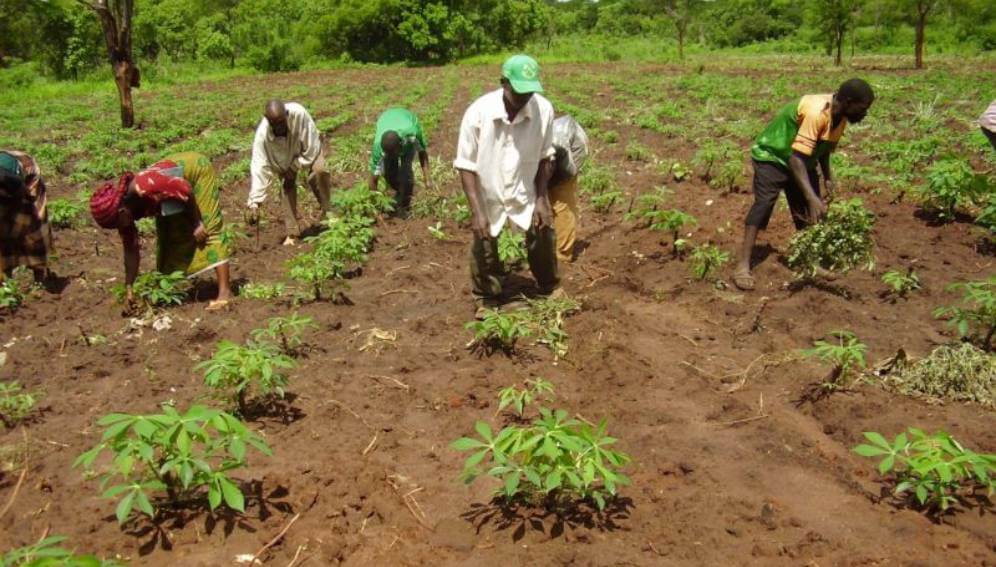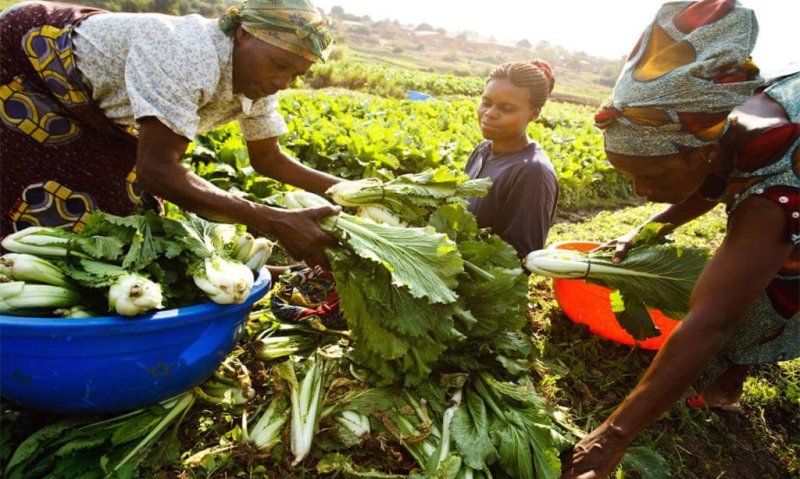Yet, this is a continent that finds itself besieged by campaigns that seek to vilify and demonize new technologies that could expand food output in Africa.
Among them:
- In March of 2018, the West African Peasant Seed Committee, which is part of the network of the Alliance for Food Sovereignty in Africa, met in Senegal and called for the abandonment “of all activities supporting the introduction of GMO seeds or seeds derived from new biotechnologies (e.g. gene editing, gene silencing).”
- Greenpeace has suggested there are risks and uncertainties that come with these breeding GM techniques, and that many of them are too new to have been properly evaluated for safety. “Gene-editing, for example, is poorly understood, especially in plants. As little is known about its mode of action it is also difficult to identify potential hazards,” the group argues.
- In a paper on the new gene-editing techniques, the African Center for Biodiversity said: “Claims that these technologies are safer than classical transgenesis techniques are unproven and are continuing to promote a chemical industrial agricultural model.”
[Editor’s note: This is part four of a series on the potential benefits of genetic engineering technology for Africa. Part one looks at climate change. Part two examines the fight against malnutrition. Part three covers Africa’s growing acceptance of GMOs.]
But failure to adopt new agricultural biotechnology techniques could have grave implications for Africa, where many people rely on farming for their livelihoods and where agricultural products are a major source of export earnings. Many of the major crops in Africa are threatened by disease and pests. As a result, many experts believe genetic engineering holds the key to fending off those threats.
“We believe science and technology creates jobs…poverty gap is also a technology gap and so we want to make the best use of any new scientific procedure to improve our agriculture, health and living standards on the continent,” said Eric Okoree, the chief executive officer of the Ghana Biosafety Authority.
Others argue that new technology must be embraced. Said Chynyere Nzeduru, director of National Biosafety for the National Biosafety Management Agency of Nigeria:
Africa will remain underdeveloped, depending solely on the consumption of imported technologies for survival, if it fails to recognize the fact that the technologies should be encouraged in Africa.

And Dr. Issoufou Kollo Abdourhamane, West Africa’s regional representative for the African Agricultural Technology Foundation, said the movement to adopt biotechnology to agriculture in Africa is being harmed by people who claim to know more than they do about the technologies in question.
“We find in our midst some people who claim to be scientists who have never studied biology, medicine or agriculture who think they know agriculture more than the professors of agriculture…who are scaring people with the claim that GMOs are bad, saying it causes cancer and any kind of fabricated arguments,” he said.
One of the most important staple African crops that can benefit from new gene-edited technologies is cassava.
The versatile cassava root is part of the starchy element of the diet in Africa, serving in much the same way as potatoes and rice do in other parts of the world. It can be fermented and fried and its leaves can be eaten after they are thoroughly boiled. It can be made into a starch that can be used as an adhesive and can be made into tapioca for use as a food thickener. It can be used to make beer, chips and sugar, while its flour can be used for bread, pasta and biscuits. Cassava also is used to make glue, animal feed, paint and paper.
The plant provides a source of livelihood for about 300 million people in sub-Saharan Africa, according to Kenton Dashiell, the deputy director general for partnerships and capacity development at the International Institute of Tropical Agriculture in Nigeria. In Uganda, one in every four people consume cassava as their main food source, while seven in 10 farmers grow it. Of the world’s 12 largest producers of cassava, seven are African nations.
There are two main problems with consuming and cultivating cassava that can be corrected using new gene editing technologies. First, the root and leaves of the shrub contain cyanide and therefore the crop has to be carefully processed to be used safely. Using CRISPR, scientists at the Innovative Genomics Institute (a collaboration between UC Berkeley and UC San Francisco), have been able to silence the cassava genes responsible for cyanide production.
Second, cassava is susceptible to brown streak disease and mosaic virus, which cause about $1 billion in losses to African farmers every year. Both are spread by whiteflies. The Donald Danforth Plant Service Center in St. Louis is working on a CRISPR-edited cassava in the lab that would be immune to brown streak. Meanwhile, researchers in Uganda and Kenya are conducting field trials of cassava developed with RNA interference (RNAi) that would resist both diseases. RNAi was the GM solution that was found to make the Hawaiian papaya immune to ringspot virus. CRISPR technology has also been used to make the starch produced by cassava “waxy” which is highly desirable trait in the food and textile industry for its gelatinization properties.
Research also is underway in the banana industry, which has been plagued by bacterial wilt in central and eastern Africa. This is of particularly importance as bananas are an important source of livelihood and food calories in the regions. In Uganda, Burundi and Rwanda, per capita consumption averages 300–400 kg a year. In those three nations, bananas are responsible for 30-60 percent of caloric intake. In Uganda about 70 percent of farmers grow the crop. Annual losses from the disease in central and eastern Africa is estimated at around $500 million a year. The disease is spread by insects, contaminated food tools, infected planting materials and rain splash.
A potential GM solution has been found that promises to make banana plants immune. It involves adding a gene from a green pepper to the banana. Trials in Uganda have been successful. And with the recent passage of bio-safety legislation to regulate GMOs, it is hoped that a GM bacteria wilt-resistant banana will be commercialized as soon as 2020. If the success demonstrated in field trials is replicated on banana farms in Uganda, it seems likely the new banana would be sanctioned in other African nations. Malawi and Kenya already are field testing the crop, while Ethiopia is conducting research on a genetic engineering solution for combating bacterial wilt disease for ensets, which is a form of banana.
Another crop that CRISPR could protect is cocoa, which is being decimated by swollen shoot virus. Of the ten largest cocoa producers in the world, four are in Africa.
Swollen shoot virus first appeared in central Ivory Coast in 2006 and 2007. Production of coca in affected areas declined by as much as 60 percent between 2009 and 2017. In an effort to stop the spread of the disease, the cocoa board announced plans in 2018 to uproot 300,000 hectares of infected trees over three years. In Ghana, about 17 percent of the cocoa trees are affected. A sharp decline in cocoa production resulting from the spread of the disease will have a devastating economic impact in the Ivory Coast and Ghana as cocoa and cocoa preparations accounted for 39.8 percent of all merchandise exports for the Ivory Coast and 17 percent for Ghana in 2017.
Scientists have identified a gene in the cocoa plant that depresses the plant’s disease response. If the gene can be “knocked” out, it could make the plant more resistant to swollen shoot virus.
CRISPR technology also may hold the solution for dealing with the spreading infestation of the Fall Army Worm by altering its genome. The pest has devastated agriculture in Africa and may soon make its way to Europe. The Center for Agriculture and Bioscience International estimated African farmers suffered losses of more than 10 billion British pounds from the start of 2017 to early 2018 in loss production of corn, sorghum, rice and sugar cane.
Regina Eddy, the head of the US government’s global Fall Army Worm task force said the “pest has the potential to…put hundreds of million at risk of hunger.”
By curbing plant diseases and the pests that cause tremendous crop damage, genetic engineering techniques can have a tremendous impact on the agricultural sector of Africa. But such benefits will not come to fruition if the opponents of the technology continue to deny its obvious effectiveness and insist that biotechnology has no role to play in agriculture on the continent.
Steven E. Cerier is a freelance international economist and a frequent contributor to the Genetic Literacy Project































